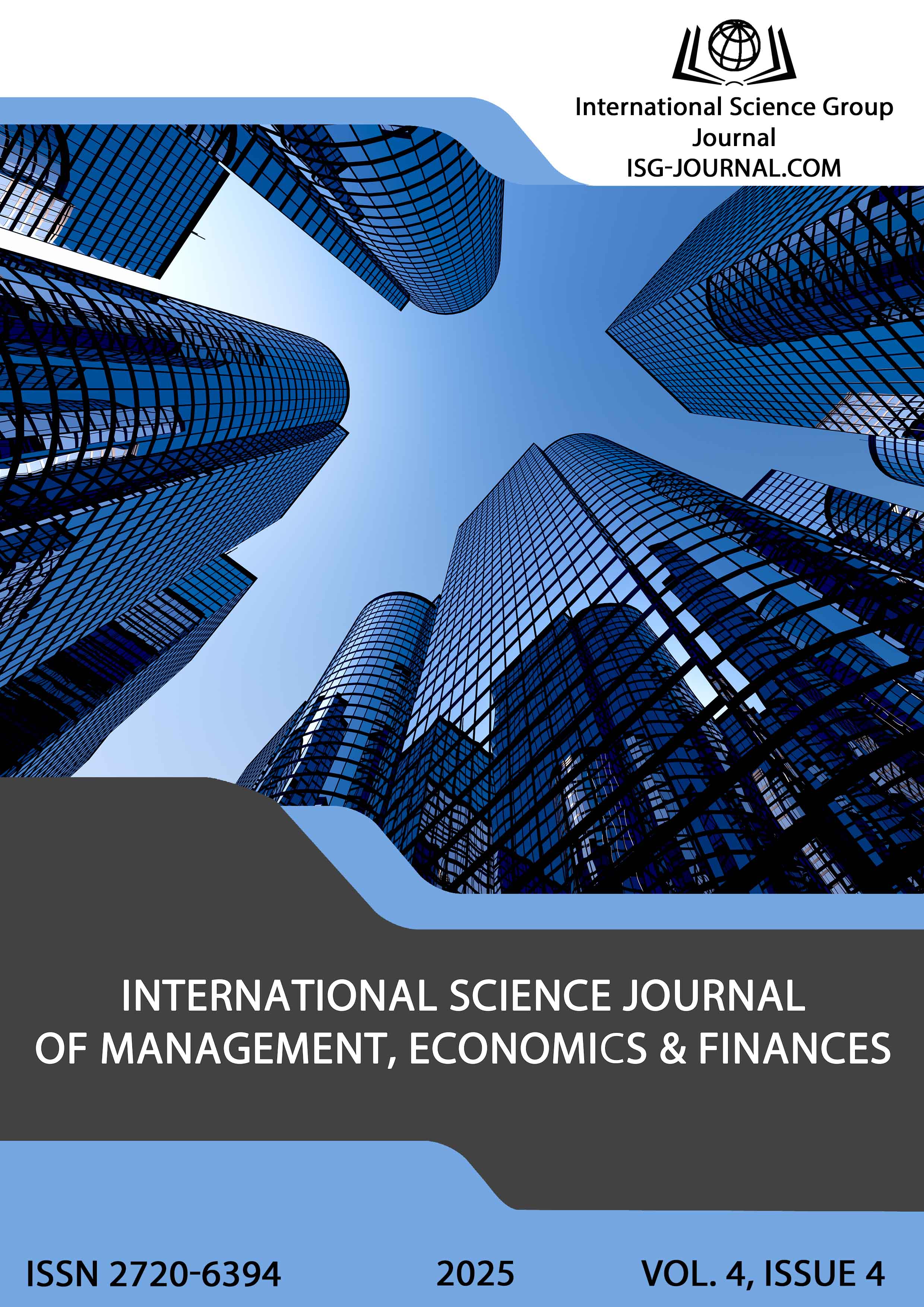The state of business activity of Ukrainian confectionery enterprises: application of the “golden rule of enterprise economics”
DOI:
https://doi.org/10.46299/j.isjmef.20250404.05Keywords:
business activity, golden rule of enterprise economics, net profit, operating profit, equity, sales revenue, enterprise property, enterprise finances, confectionery industryAbstract
The article is devoted to the study of business activity of confectionery enterprises. The formation of the business activity of an enterprise is implemented at many stages of the enterprise's functioning. An analysis of the scientific literature devoted to determining the essence of business activity was carried out. Existing methods of analyzing business activity and its impact on the financial condition of business entities were studied. It was found that it is advisable to analyze the internal situation of an enterprise not only by calculating turnover ratios, the duration of the operating cycle and its components, but also using the “golden rule of enterprise economics”. This rule is an important component of assessing the level of business activity and is implemented through a comparison of the growth rates of the main resource and performance indicators: enterprise property, net income and net profit. 15 confectionery enterprises were preliminarily selected for the analysis of business activity, among which a third had unprofitable activities in 2023-2024 and, accordingly, an unsatisfactory level of business activity. The fulfillment of the conditions of the “golden rule of enterprise economics” by ten normally functioning enterprises of the confectionery industry of Ukraine was determined. It was found that 10% of such enterprises have an unsatisfactory level of business activity, which is characterized by a negative tendency to decrease the rate indicators of the “golden rule of enterprise economy” (Enterprise 10). 60% of the studied enterprises (Enterprise 4, Enterprise 5, Enterprise 6, Enterprise 7, Enterprise 8, Enterprise 9). Only 30% of the research objects have a high level of business activity, which means a stable tendency to increase the rate indicators (Enterprise 1, Enterprise 2, Enterprise 3). The introduction of indicators of the growth rates of operating profit and equity is a qualitative improvement “golden rule of enterprise economics”. This will allow you to quickly identify the strengths and weaknesses of the enterprise, to effectively manage resources and financial results of the enterprise.References
Соловей Н., Гудима В. (2019). Аналіз ділової активності підприємства як основа підвищення ефективності його діяльності. Молодий вчений, 1(65), 247-249.
Роганова Г.О. (2025). “Золоте правило економіки підприємства”: результати застосування для кондитерських підприємств України. Scientific achievements of contemporary society. Proceedings of the 11th International scientific and practical conference. Cognum Publishing House. London, United Kingdom, 779-781.
Дончак Л.Г., Ціхановська О.М. (2018). Ділова активність підприємства та шляхи її зміцнення. Економіка і суспільство, 10, 250-255.
Петик, Л., Фелісєєв, В. (2022). Ділова активність промислових підприємств україни. Економічний простір, (181), 188-191.
Бичковський А. Ю. (2013). Методика визначення рівня конкурентоспроможності суднобудівних підприємств. Економіка України, 10 (623), 67–73.
Чуй І., Шемчук Л., Боднарюк В. (2022). Прикладні аспекти аналізу ділової активності підприємства. Вісник Хмельницького національного університету, 5, Т. 1, 288293.
Бондаренко Л.П., Кузовкін А.І. (2023). Вплив війни на ділову активність підприємств західного регіону на прикладі ТОВ «Торговий дім «Електрон». Економіка та суспільство, 58. Available at: https://doi.org/10.32782/2524-0072/2023-58-68
Буздиган М.О. (2019). Дослідження процедури оцінювання інноваційно-інвестиційного складника ділової активності підприємств. Держава та регіони, 2, 75-82.
Мартусенко І.В., Дончак Л.Г. (2018). Ділова активність: теоретичні аспекти та особливості формування. Економіка і суспільство,19, 501–505.
Степаненко О.І., Дубовик М.Ф. (2022). Аналіз дебіторської заборгованості, її вплив на фінансовий стан та ділову активність підприємства. Проблеми системного підходу в економіці, 2(88), 116–125.
Кіндрацька Г. І., Кулиняк Ю. І. (2017). Ділова активність українських підприємств: рівні та основні фактори впливу. Видавництво Львівської політехніки, 873 (5). 50-59.
Мулик Т.О., Навитанюк О.В. (2017). Аналіз підходів до визначення сутності поняття «ділова активність підприємства» та показників, що її характеризують. Східна Європа: економіка, бізнес та управління випуск, 2 (07), 280–284.
Онищенко C.В., Маслій О.А., Пантась В.В. (2024). Ділова активність бізнесу в Україні: цифрова трансформація та сталий розвиток. Економіка і регіон, 1(92), 136–146.
Руденко Є. М. (2014). Застосування "золотого правила економіки" для оцінки ділової активності сільськогосподарських підприємств. Агросвіт, 16, 42-49.
Фаріон В.Я. (2013). Аналітична оцінка ділової активності та рентабельності підприємств. Інноваційна економіка, 10, 2733.
Публічна фінансова звітність підприємств кондитерської промисловості за 2023-2024 рр. (2025). Available at: https://clarity-project.info/edrs
Downloads
Published
How to Cite
Issue
Section
License
Copyright (c) 2025 Hanna Rohanova

This work is licensed under a Creative Commons Attribution 4.0 International License.






